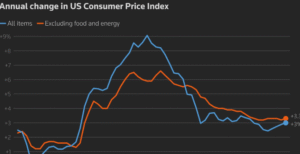$CL_F $BRENT $XOM
#OilPrices #RussiaUkraineWar #BrentCrude #GeopoliticalRisk #EnergyMarkets #LongRangeMissiles #CrudeFutures #SupplyAndDemand #OilIndustry #USCrude #NuclearTensions #MarketOversupply
The recent escalation in the ongoing Russia-Ukraine conflict has reignited fears of geopolitical instability in Europe, which is once again being factored into global oil prices. This development comes as the United States, United Kingdom, and France have taken steps to allow Ukraine to use long-range missiles, potentially expanding the scope of the war by striking Russian territory. In response, Russia has altered its nuclear doctrine, signaling a shift in its defense strategy, which the market has interpreted as a dangerous escalation that could lead to further chaos in the region. Because of these heightened risks, oil prices, particularly Brent crude, have seen an uptick, with ICE Brent recently lifting to $73 per barrel. This increase indicates that investors are pricing in the potential for further disruptions to global energy supply chains, especially in Europe, where reliance on Russian oil and natural gas still plays a prominent role in energy security.
In the U.S., crude futures have shifted into contango for the first time since February, a situation where the spot price of oil is lower than future prices. This shift signals an oversupply in the short-term market, an unusual scenario given the global volatility surrounding the war in Ukraine. One of the reasons behind this surplus is the weaker-than-expected demand from China, normally a major driver of oil consumption, as its economic growth continues at a slower pace. Additionally, the possibility of trade tensions arising from potential new tariffs by former President Donald Trump, focused on U.S.-China economic relations, could further suppress demand for crude oil in the world’s second-largest economy. Traders are now paying close attention to these developments, as any further decline in Chinese growth could exacerbate the current oversupply, potentially pushing oil prices downward in the near term.
Global financial markets are also beginning to feel the repercussions of heightened geopolitical risk, with energy stocks and ETFs closely tracking the oscillations in oil prices. Shares of major oil companies like $XOM have shown volatility, reflecting investor uncertainty about whether the market will continue to absorb the supply glut or see a swift reversal if there are further supply disruptions due to the war. The situation in Eastern Europe presents ongoing risks, as any additional sanctions or escalations in the conflict could heavily impact supply routes, particularly for Russia, which remains one of the largest oil producers in the world. A tightening of Russian oil supply could lead to a spike in prices, reversing the current oversupply conditions and driving crude futures back into backwardation, where immediate oil prices are higher than future prices, reflecting more demand for immediate supply.
The interplay between geopolitical tensions, demand fluctuations, and trade policy will be essential to watch over the coming months. While oil prices remain slightly elevated due to European risks, the broader market dynamics suggest that any further weakening of global demand, especially from China, could lead to downward pressure on oil prices. Conversely, should the conflict in Ukraine spiral further out of control, markets might refocus on supply security, pushing prices higher. Investors are navigating a precarious environment filled with conflicting economic signals, from fears of a global recession to concerns over supply chain disruptions. As this situation evolves, oil will likely remain at the core of global market volatility.










Comments are closed.